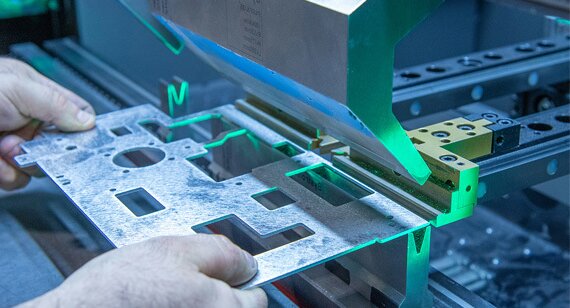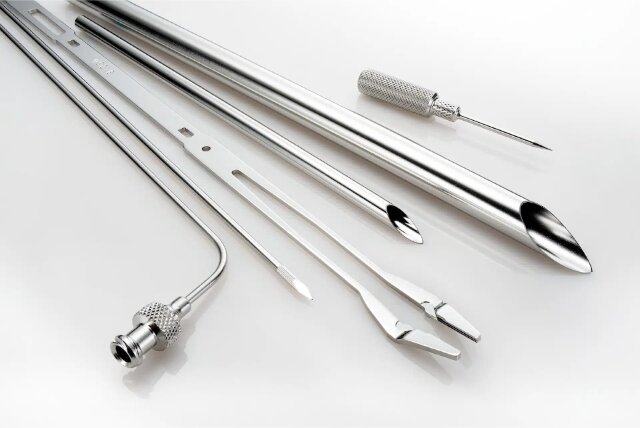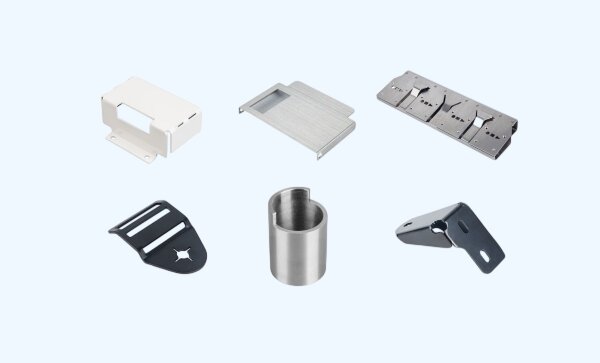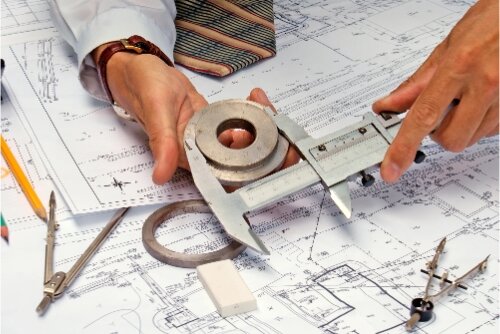Medical devices must be reliable, easy to clean, and meet strict safety standards. Even a minor malfunction can jeopardize patient safety or result in costly repairs. Therefore, engineers and purchasing managers need solutions that are both practical and durable—ready for immediate production.
Sheet metal fabrication provides an efficient and effective solution. It is strong, easy to sterilize, and exact. Selecting the right metal and design can reduce contamination risks, extend device lifespan, and lower overall costs.
This article is organized into clear, practical sections designed for engineers and designers. We aim to make technical details more straightforward to understand while demonstrating why sheet metal is a wise choice for medical devices.
You’ll learn about common materials, key fabrication processes, design principles, regulatory standards, and real-world applications—showing how these technologies come together in modern medical manufacturing.
Standard Sheet Metal Materials in Medical Devices
Selecting the right material is crucial in medical device production. Different sheet metals vary in strength, weight, and corrosion resistance. Below are the most widely used materials in healthcare manufacturing.
Stainless Steel
Stainless steel is one of the most commonly used materials in medical devices. It offers outstanding corrosion resistance and retains its strength after repeated sterilization—ideal for surgical instruments, trays, and structural components of hospital equipment.
Grades 304 and 316L are particularly popular. Grade 316L contains molybdenum, enhancing resistance to rust and cleaning chemicals, and is often used in implants and surgical tools that require biocompatibility. Its smooth surface prevents bacterial buildup, helping maintain sterile conditions.
Aluminum
Aluminum is lightweight and easy to machine, making it ideal for components requiring mobility or portability—such as imaging equipment housings, wheelchairs, and diagnostic instrument covers. Its low weight improves usability for both patients and healthcare workers.
When anodized, aluminum forms a protective oxide layer that enhances corrosion resistance and simplifies cleaning. Its excellent thermal conductivity makes it suitable for heat-generating devices like laboratory analyzers or illumination systems.
Titanium
Titanium stands out for its high strength-to-weight ratio and exceptional biocompatibility. It’s widely used in implants, surgical tools, and prosthetic parts. Titanium doesn’t react with body tissues or fluids, making it a safe option for long-term use inside the body.
Its natural oxide layer protects against corrosion from bodily fluids and disinfectants, ensuring durability even after multiple sterilization cycles. Titanium’s high strength allows for thinner, lighter components—reducing material use while maintaining reliability.

Sheet Metal Fabrication Processes for Medical Components
Producing medical components requires high precision, consistency, and strict hygiene standards. The following key sheet metal fabrication processes ensure quality and performance in medical devices.
Laser Cutting: Precision and Clean Edges
Laser cutting is widely used for producing complex, delicate shapes in medical components. A focused laser beam cuts metal sheets with minimal heat impact, resulting in clean, burr-free edges that often need little or no post-processing.
Precision is critical in medical applications. Laser cutting achieves tight tolerances and intricate details suitable for surgical housings, sensor enclosures, and control panels. Since it’s a non-contact process, it minimizes contamination risk and maintains smooth, sterilizable surfaces.
Common challenges:
- Stainless steel or aluminum surfaces may discolor or develop burrs.
- Contact between the sheet and the machine can cause surface scratches.
- Parts with dense vent holes may deform during cutting.
Solutions:
- Apply a thin layer of anti-rust oil before cutting to reduce discoloration and burrs while preventing scratches during cleaning.
- For parts with high surface appearance requirements, apply a laser protection film before cutting. For components requiring scratch-free surfaces on both sides, operators should handle materials carefully and use protective coatings or surface treatments such as electropolishing or brushed anodizing.
- For parts with many vent holes, use a leveling machine after cutting or pre-punch holes using an NCT machine before laser cutting.
Bending and Forming: Ensuring Structural Strength
After cutting, sheet metal is bent or formed into functional shapes to add rigidity and structural integrity. Standard techniques include press brake bending, deep drawing, and roll forming.
Accuracy during bending is vital in medical devices—minor deviations can cause assembly misalignment. CNC-controlled press brakes maintain consistent angles and dimensions. Stainless steel and titanium retain their strength after bending, making them suitable for durable, lightweight enclosures.
Common challenges:
- Deep bending marks remain visible after surface finishing.
- Tight tolerances (±0.1–0.2 mm) are challenging to maintain.
- Improper placement during handling can cause surface scratches.
Solutions:
- Use rubber pads or non-marking dies during bending to prevent visible impressions.
- Use high-precision press brakes and select V-groove widths 4–8 times the material thickness. Skilled operators ensure consistent techniques and accuracy.
- Use proper packaging and careful handling to prevent surface damage.
Welding and Joining: Ensuring Durability
Welding and joining processes connect multiple parts into one solid structure. In medical fabrication, TIG (Tungsten Inert Gas) welding and laser welding are most common. Both methods deliver precise joints with minimal heat distortion, preserving tight tolerances.
TIG welding works well for stainless steel and titanium, commonly used in surgical and diagnostic devices. It produces smooth, easy-to-clean weld seams ideal for sterilization. Laser welding provides higher precision and is suitable for thin materials that must remain distortion-free.
To ensure strength and dimensional accuracy, welding jigs are used for positioning. Each joint is tested for strength and integrity to prevent separation or deformation.
Surface Treatment and Finishing
Surface finishing enhances appearance, durability, and hygiene. Common treatments include polishing, passivation, anodizing, and powder coating. These improve corrosion resistance, smooth the surface, and extend the device’s lifespan.
- Stainless steel: Passivation removes impurities and boosts corrosion resistance.
- Aluminum: Anodizing forms a durable oxide layer that’s easy to clean.
- Polishing: Reduces surface roughness and prevents bacterial buildup.

Applications in Medical Device Manufacturing
Sheet metal’s combination of strength, precision, and cleanability makes it an essential material in medical device manufacturing. Below are its major applications.
Diagnostic Equipment
MRI scanners, CT scanners, and X-ray machines rely on robust sheet metal housings that protect sensitive electronics and mechanical systems from impact, dust, and electromagnetic interference.
Stainless steel and aluminum are the preferred materials for their corrosion resistance and ease of cleaning. Their smooth surfaces prevent bacterial buildup and support frequent sterilization. Sheet metal enclosures provide structural strength without adding excessive weight, improving mobility and maintenance efficiency.
Surgical Instruments and Equipment
Surgery demands high precision, and sheet metal plays a vital role in creating reliable, safe instruments. Stainless steel is the primary material for scalpels, clamps, and trays—it maintains sharpness, resists rust, and withstands repeated sterilization cycles.
Larger surgical equipment—such as operating tables, instrument stands, and lighting housings—also uses sheet metal components. Its ability to be bent and welded into complex shapes supports ergonomic designs that are stable and compliant with medical standards.
Hospital Furniture and Fixtures
Sheet metal is well-suited for hospital furniture requiring strength, hygiene, and easy maintenance. Beds, cabinets, carts, and shelving systems are often made from stainless steel or aluminum frames designed for daily use, cleaning, and movement.
Smooth surfaces and tight joints minimize dust and bacteria accumulation. Compared to plastic alternatives, metal furniture offers better fire resistance, higher load capacity, and longer service life—making it a safer, more durable choice for patient areas.
Laboratory Equipment
Laboratories demand materials that withstand chemicals, humidity, and frequent handling. Sheet metal delivers the required strength and chemical resistance for lab benches, centrifuge housings, and sample storage cabinets.
Aluminum and stainless steel maintain dimensional stability under changing temperatures and humidity. Their non-porous surfaces simplify cleaning and help prevent cross-contamination during testing or analysis.
Electronic Medical Device Enclosures
Sheet metal enclosures protect sensitive electronics in medical monitoring and control systems. Devices like patient monitors, infusion pumps, and ventilators use metal housings to guard against impact, moisture, and electromagnetic interference.
Aluminum is often used for its lightweight and excellent heat dissipation, while stainless steel provides higher strength and corrosion resistance. Well-designed enclosures improve both protection and usability, offering a professional appearance suitable for clinical environments.

Design Considerations for Medical Sheet Metal Parts
Designing sheet metal parts for medical devices requires careful planning. Every component must meet strict standards for performance, safety, and cleanliness.
Precision and Tolerance Requirements
Medical devices demand extremely tight tolerances to ensure accurate assembly and reliable performance. Even minor dimensional variations can affect how parts fit or move. Precision guarantees proper alignment, smooth operation, and consistent function.
Processes such as laser cutting and CNC machining deliver this level of accuracy by minimizing human error and maintaining consistency in large-scale production. Precise tolerances also reduce noise, vibration, and wear—critical for devices that operate continuously.
Cleanliness and Sterilization Standards
Cleanliness is one of the most critical design priorities in medical fabrication. Components must endure frequent cleaning and sterilization without corroding or weakening. Stainless steel, aluminum, and titanium are widely used for their chemical resistance and smooth, non-porous surfaces.
Designers should avoid deep grooves, sharp corners, or rough textures where bacteria can collect. Polished or passivated finishes make sterilization easier. Welded joints are sometimes sealed to eliminate gaps and prevent contamination buildup.
Ergonomics and Safety
Ergonomics and safety are critical for both healthcare professionals and patients. Medical components must be comfortable to handle and safe to use. Smooth edges, rounded corners, and optimized geometries help prevent injuries during operation.
When designing sheet metal parts, engineers consider grip, weight, and accessibility. Lightweight metals like aluminum reduce fatigue in handheld or portable devices. For stationary or load-bearing equipment, structural stability and strength take priority.
Regulatory and Quality Standards
Manufacturing medical devices requires compliance with stringent regulatory and quality frameworks to ensure safety, reliability, and traceability. Following recognized standards confirms that each part meets the functional and hygienic expectations of the healthcare industry.
ISO 13485 and FDA Compliance
ISO 13485 is a globally recognized quality management standard for medical device production. It defines consistent procedures for design, manufacturing, and testing. Compliance ensures full material traceability, complete documentation, and control of every stage—from prototyping to final inspection.
For products sold in the United States, compliance with the FDA Quality System Regulation (QSR) is equally essential. The QSR enforces standards that guarantee device safety and effectiveness. Sheet metal components must meet requirements for material traceability, biocompatibility, and mechanical integrity.
Many manufacturers hold both ISO 13485 certification and FDA registration. This dual compliance demonstrates a strong commitment to quality, giving engineers, designers, and procurement teams confidence that manufacturing processes are well-validated.
Cleanroom Fabrication and Quality Inspection
Cleanroom fabrication is vital for producing high-purity medical components. These controlled environments regulate temperature, humidity, and airborne particles to minimize contamination. Workers wear protective clothing, and all tools are sterilized to maintain cleanliness.
For sheet metal parts, cleanroom conditions prevent dust, oil, and microscopic debris from adhering to surfaces—especially important for surgical instruments, diagnostic systems, and implantable devices. Even minor contamination in these applications can lead to device failure or infection.
Quality inspection occurs throughout the entire process. Parts are tested for dimensional accuracy, surface finish, and weld integrity. Non-destructive testing (NDT) methods—such as ultrasonic or X-ray inspection—detect internal flaws without damaging the part.
Advantages of Using Sheet Metal in Medical Device Manufacturing
Sheet metal continues to be one of the most reliable and versatile materials in the medical industry. It offers a combination of strength, durability, precision, and design flexibility that few materials can match.
Strength and Durability
Medical devices must remain reliable under heavy use, repeated cleaning, and strict sterilization. Sheet metal provides the required strength and rigidity to meet these conditions. Stainless steel and titanium maintain their structure and performance even after years of service.
The durability of sheet metal reduces the need for frequent replacements. Welded frames and reinforced joints add stability to hospital beds, diagnostic machines, and surgical tables—extending product life and lowering maintenance costs.
Lightweight and Corrosion Resistance
Mobility is key in healthcare environments. Aluminum and titanium deliver a high-strength yet lightweight solution, allowing easier handling and movement of equipment within hospitals or laboratories.
Corrosion resistance is another significant advantage. Stainless steel and aluminum withstand exposure to moisture, cleaning chemicals, and disinfectants. Their smooth surfaces simplify sterilization, helping maintain hygiene and prevent contamination.
Cost-Effectiveness from Prototyping to Mass Production
Sheet metal fabrication is both scalable and cost-efficient. Laser cutting and CNC bending enable rapid prototyping with minimal tooling, allowing engineers to test and refine designs quickly—without the expense of casting or molding.
The same processes can be fully automated for high-volume production, ensuring consistent quality. High material utilization reduces waste and overall cost. This flexibility benefits startups and large manufacturers alike by shortening lead times and optimizing budgets.
Ready to turn your medical device ideas into reliable, high-performance components?
Discover how sheet metal can enhance your designs, making devices stronger, safer, and more precise. Shengen can provide a complete, one-stop sheet metal fabrication solution for your project, including:
- Rapid Prototyping: Laser cutting and bending enable fast design validation.
- High-Precision Production: Bending, deep drawing, and laser welding ensure consistent dimensions and reliable performance for every part.
- Material Selection: Stainless steel, aluminum, titanium, and more—choose the best material for your application.
- Surface Treatment & Sterilization Optimization: Polishing, passivation, anodizing, and other treatments for easy cleaning and corrosion resistance.
- Strict Quality Control: Full-process quality management under ISO 13485 and FDA standards for traceability and reliability.
Contact our team to discuss your project, explore material options, and find solutions that meet the strictest medical standards. Start building better medical devices today!
Hey, I'm Kevin Lee

For the past 10 years, I’ve been immersed in various forms of sheet metal fabrication, sharing cool insights here from my experiences across diverse workshops.
Get in touch

Kevin Lee
I have over ten years of professional experience in sheet metal fabrication, specializing in laser cutting, bending, welding, and surface treatment techniques. As the Technical Director at Shengen, I am committed to solving complex manufacturing challenges and driving innovation and quality in each project.




